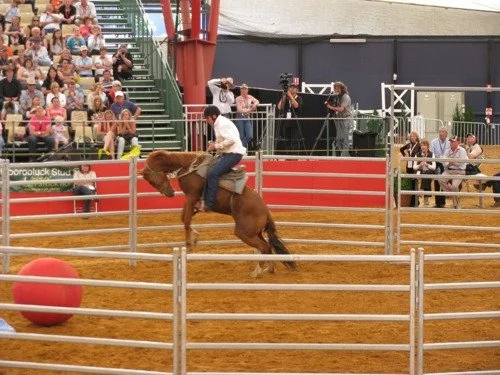Horses are not futurists. They can’t see into the future or read our minds and intentions. So when we ask a horse for something the very first time, they don’t know if or even when it will ever stop.
THEY DON’T KNOW THAT IT IS NOT FOREVER.
Let me give you a few examples.
When we first fit a saddle or get on a horse’s back, it does not know whether the saddle will ever come off or whether we will ever dismount.
When we pick up a horse’s foot for the first time or put a bit or a dentist's gag in its mouth how does it know life will ever return to normal?
The first time we load a horse into a trailer or tie a horse to a post or put it into a yard can it ever know it will be given its freedom ever again?
The first time a horse has any of these experiences a large part of the panic they can cause comes from a horse’s lack of understanding that the experience is temporary. It’s not forever.
It takes time and repetition for a horse to figure out that being taken away from its buddies is temporary and it will be with them again soon. Or that if they pick up their foot for us, it will get to stand on 4 legs again very soon and there is no need to panic. Or the discomfort of the saddle or hobbles is not permanent and there is no danger.
These are things we all know. But these are also things we sometimes forget to deal with compassionately. These are things we forget the horse doesn’t know.
For example, some people throw a saddle on a horse for the first time and let the horse buck until it gives up in futility. The horse gives up because it works out nothing is going to get this hunk of leather off my back and now I’m stuck with it forever. That’s a terrible mindset to leave a horse with – helplessness and futility.
To avoid this we must break lessons down into tiny incremental steps. Introduce new things in layers and for short periods of time, gradually building on each layer as the horse grows in confidence, trust, and understanding.
Let’s think about trailer loading as an example.
Loading a horse into a trailer for the first time comes from teaching a horse to lead brilliantly.
Confidence in trailer loading is the result of dozens of in and out exercises, asking the horse to stay in the trailer for longer periods as it feels more comfortable for the horse.
Teaching a horse that standing on a moving platform in a tin box is an okay experience starts with loading a horse in a trailer and driving for 20m, then letting it out. Repeating that enough times to take the worry out of it before driving for 100m and then 1km and then 20km.
The same principle can be applied to the early saddling, the first rides, the first tying-up sessions, the first time a foal is removed from its mother – or whatever lesson you can think of.
Ease a horse’s worry about a new experience by making it very brief. So brief that the horse doesn’t have time to figure out he should panic. Life is not coming to an end and things will return to normal very shortly. This is how you can give a horse confidence and avoid extreme responses and feelings of helpless futility.
I know we all know this principle. But I also know we don’t all practice it.
This is the horse's first ever ride and is from a colt starting competition in Australia a few years ago. I'm pretty sure in the 4 or 5 hours preparation the horse had had before this moment, nobody had explained to the horse that the rider was not going to stay on his back forever.

